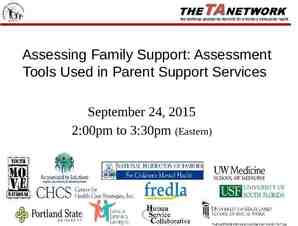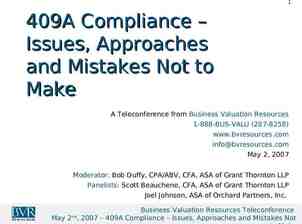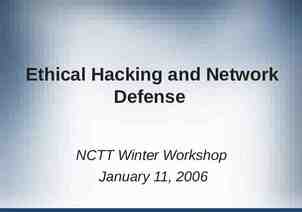Funded through the California Department of Education, Early Education
96 Slides5.36 MB

Funded through the California Department of Education, Early Education Support Division

Understanding Childhood Injuries

Where are children injured? Most injuries occur on the playground, accounting for 50 to 60 percent of all injuries child care settings. Furniture, stairs, windows, or slipping and tripping hazards are often involved. Injuries occur in and around cars and other vehicles.

How are children injured? Falls are the leading cause of serious injuries. A child may injure another child (for example, they might fight, push, collide, throw objects, or bite). Children may collide with objects such as moving playground equipment (swings), furniture, part of the building, plants, toys, a fence, gate, etc. Children may be cut by a sharp edge; burned by a hot surface, hot tap water or heater; or poisoned by toxic materials.

Risk of Injury and Developmental Stages Injury rates are low for infants and increase with the age of the child. Children ages two to five years old get injured most frequently.

Birth to 3 months old

Birth to 3 months old

4 to 6 months old

4 to 6 months old

7 to 12 months old

7 to 12 months old

Developmental Delay Children with developmental delays may have unique risks for injury. For more information on developmental milestones and developmental delay go to the CDC website Learn the Signs. Act Early. www.cdc.gov/ncbddd/actearly/index.html

Preventing Childhood Injuries Topics SIDS and Other SleepRelated Infant Deaths Shaken Baby Syndrome Brain Injury and Concussion Child Abuse Prevention Burns and Fire Choking, Strangulation, Suffocation Falls Poisoning Drowning Young Children and Disasters Child Passenger Safety Field Trip Safety School Bus Safety

Sudden Infant Death Syndrome(SIDS) & Other Sleep-Related Infant Deaths SIDS is the death of an infant younger than 1 year of age that is unexplained after a thorough scene investigation, autopsy, and review of the clinical history. Ninety percent of SIDS deaths occur before an infant reaches 6 months of age, and peak between 1 and 4 months of age. Other sleep-related infant deaths include suffocation, asphyxia, entrapment, and strangulation.

SIDS and Child Care Research shows that unexpected infant deaths in child care were more likely to happen during the first week. Infants are at greater risk when they are: 1. used to sleeping on their backs at home and are placed on their stomachs for sleep in child care 2. allowed to sleep in an unsafe sleep environment in child care (for example: a car seat, stroller, futon, pillow, or bean bag)

Eunice Kennedy Shriver National Institute of Child Health and Human Development (NICHD), NIH, HHS; http://www.nichd.nih.gov.

How to Reduce the Risk of SIDS in Child Care Always put to sleep on their backs until 1 year of age. Place infants on a firm mattress, with a fitted crib sheet, in a crib or play yard that meets the Consumer Product Safety Commission (CPSC) safety standards. Keep the crib free of toys, mobiles, soft objects, stuffed animals, pillows, bumper pads, blankets, positioning devices and extra bedding.

How to Reduce the Risk of SIDS in Child Care Do not overdress infants – no more than one extra layer than an adult. Keep the infant’s head uncovered for sleep. Remove bibs and clothing with hoods. If additional warmth is needed for sleep, a one-piece blanket sleeper or sleep sack may be used Ventilate the sleeping area. Keep the temperature comfortable for a lightly clothed adult. Actively observe sleeping infants by sight and sound.

How to Reduce the Risk of SIDS in Child Care Do not allow infants to sleep on a sofa/couch, chair cushion, bed, pillow, or in a car seat, stroller, swing or bouncy chair. If an infant falls asleep anyplace other than a crib, move the infant to a crib right away. If an infant arrives asleep in a car seat, move the infant to a crib right away. Space cribs three feet apart with one infant per crib.

How to Reduce the Risk of SIDS in Child Care If provided by the parent, offer a pacifier for sleep. Do not attach pacifiers to an infants clothing. When able to roll back and forth from back to front, place infants to sleep on their backs and allow them to assume a preferred sleep position.

How to Reduce the Risk of SIDS in Child Care Keep your child care program smoke-free. Support breastfeeding families. Provide supervised “Tummy Time”.

Tummy Time Eunice Kennedy Shriver National Institute of Child Health and Human Development (NICHD), NIH, HHS; http://www.nichd.nih.gov.

Eunice Kennedy Shriver National Institute of Child Health and Human Development (NICHD), NIH, HHS; http://www.nichd.nih.gov.

What about swaddling? Although some newborns and young infants may be swaddled for sleep at home, swaddling of infants is not necessary or recommended in child care programs. The risk of death is high if swaddled infants are placed on, or roll onto, their stomachs. In a child’s home, swaddling should not be used once an infant shows signs of trying to roll over (usually before an infant is three months old).

Shaken Baby Syndrome The term “shaken baby syndrome” describes a set of symptoms seen in infants who have sustained a head injury from shaking. The term “abusive head trauma” may also be used. Abusive Head Trauma includes the various ways a child could suffer a head injury as a result of abuse such as: shaking; dropping; throwing; hitting; or hitting child’s head against a surface or object while shaking.

Abusive Head Trauma/Shaken Baby Syndrome May result in: partial or total blindness; hearing loss; paralysis; problems with motor development; seizure disorders; cerebral palsy; sucking and swallowing disorders; intellectual disabilities; speech and language delay; problems with executive function; attention, memory, and behavior problems.

Infant Crying Infants are unable to express their needs and feelings using words. Instead, they cry. Infants may have colic or other kinds of pain and discomfort leading to crying. A phase of alarming crying is considered a normal phase in infant development. Strategies for soothing a crying infant include gently rocking, carrying, singing, providing white noise, and offering a pacifier.

Infant Crying Caregivers may experience anger or frustration over prolonged crying. Caregivers need strategies to cope with a crying, fussy, or distraught infant.

Strategies to Cope Manage your stress and practice self-care. Be aware of feelings of increasing frustration or anger. Use a calming strategy that works for you. For example, take a few deep breaths or breathe deeply while counting to ten. If you are unable to bring your frustration under control on your own, then find a way to take a break from the situation (without leaving children unsupervised).

Strategies for Coping (cont.) For more information about typical infant development, how to manage infant crying, and techniques for soothing crying infants: See Period of PURPLE Crying www.purplecrying.info Remember: it is never okay to shake or strike a child.

Identifying Shaken Baby Syndrome Watch for: Changes in mood, behavior, appetite, breathing, head or eye movement Bruising (around the head, neck or chest), bleeding (around the eyes), swelling of the head, forehead, or soft spot Changes in muscle tone, ability to lift head, tremors, seizures

Traumatic Brain Injury (TBI) and Concussion TBI is a type of brain injury that changes the way the brain normally works. A bump, blow, or jolt to the head can cause a TBI. A blow to the body that causes the head and brain to move rapidly back and forth can also cause a TBI. A concussion is the most common type of TBI.

Eunice Kennedy Shriver National Institute of Child Health and Human Development (NICHD), NIH, HHS; http://www.nichd.nih.gov.

Child Abuse Prevention What is child abuse? Child abuse is a non-accidental injury or pattern of injuries to a child for which there is no reasonable explanation. Child abuse is usually a pattern of behavior, not a single act.

Kinds of Child Abuse Physical Emotional Sexual Neglect

Ways to Prevent Child Abuse Build trusting relationships with families Provide information on child development Help families build positive relationships with their children Model positive communication and good child care practices Host parenting workshops for families

Ways to Prevent Child Abuse (cont.) Know the signs of family stress and offer support Refer families to community resources Educate young children about their right to say “no”. Inform parents that you are required by law to report suspected child abuse.

Mandated Reporter As a Mandated Reporter, you are required to report known or suspected child abuse to Child Protective Services (CPS). Call CPS for advice if you are not sure about something you observe. Call 9-1-1 if the child is in immediate danger or needs urgent medical care.

Mandated Reporter Training Child care providers are required to take Mandated Reporter training about: How to spot indicators of possible child abuse or neglect How to talk to children about suspected abuse How to make a report What happens after a report is filed The free online class can be found here: http:// childcare.mandatedreporterca.com

Burns and Fire Burns can be caused by contact with hot objects or surfaces, hot liquids or steam, fire, electricity, or chemicals. Hot liquids—not fire— are the most common cause of burns to young children. Children are curious and don’t recognize danger!

Burn and Fire Prevention: Equipment Install smoke detectors. Maintain a working fire extinguisher. Put barriers around fireplaces, radiators or hot pipes. Don’t use portable, open flame or space heaters in play areas. Cover electrical outlets. Don’t overload electrical wiring. Keep the temperature of your hot water heater at 120 F or lower. Check the water temperature before bathing a child in a tub.

Burn and Fire Prevention: Food and Drinks Keep children out of cooking areas. Don’t drink hot beverages or carry anything hot near children. Don’t heat bottles in the microwave. Test hot food before giving it to a child. Keep hot foods and drinks away from the edge of tables and counters and off of tables with table cloths. Use the rear burners for cooking, turn pot handles toward the rear or center.

Fire and Burn Prevention: Practices Store all chemicals, matches, and lighters out of children’s reach. Teach children to stay away from hot things and not to play with matches, lighters, chemicals, electrical equipment. Plan a fire escape route. Conduct regular fire and evacuation drills using different exits. Teach children how to stop, drop, and roll.

Choking Young children are at greater risk of choking because: They explore the world by putting objects in their mouths They are just learning how to chew and eat solid food

Signs of choking and suffocation in children: difficulty speaking or breathing, the inability to cough, wheezing sounds, clutching of throat or gesturing, a bluish face, confusion and unexplained loss of consciousness (this is a very late sign).

Choking Prevention

Choking Hazards: Foods Chunks of meat Whole olives Whole grapes and raisins Peanuts/nuts Gum Popcorn Dried fruit Hard candy, cough drops, lollypops Raw vegetables (carrots, etc.) Hot dogs and sausages (cut in rounds or whole) Watermelon seeds Spoons full of peanut butter

Choking Hazards: Toys and Objects Pins Coins Nails Toothpicks Jewelry Game pieces Buttons Small toys Marbles Jacks Crayons Batteries

Suffocation and Strangulation Hazards Balloons Plastic bags Disposable gloves Toy chests with no air holes Cords from window blinds and drapes Ropes and string Never place a crib near a window. Don’t drape blankets over crib rails or attach hanging toys/mobiles to cribs. Use CSPC approved cribs and play yards.

Falls Falls are the single greatest cause of injury in the child care environment. They are the most common injury requiring medical care. Children of all ages can fall. Preventing falls is the greatest challenge to a safe environment.

Reducing the Risk of Falls: Equipment Make sure equipment is in good repair, inspected for safety, and developmentally appropriate. Use durable, balanced furniture that will not tip over easily. Place gates at the top and bottom of stairs.

Reducing the Risk of Falls: Environment Install window guards and safety latches. Pick up toys and other objects from the floor. Clean up spills right away. Don’t use slippery floor finishes. Remove loose and slippery rugs. Adapt your space for children with special mobility needs. Maintain safe and developmentally appropriate playgrounds.

Reducing the Risk of Falls: Supervision Don’t allow children to climb on furniture. Never leave infants or toddlers unattended on a bed, changing table, or other high surface. Enforce rules for where children can run. Enforce rules for playground safety consistently (for example, no running up slides).

Poisoning Poisonings occur from many common items found in and around a home or child care environment. Poisoning can occur by eating or drinking, contact with skin, getting in the eyes, breathing fumes, puncture wounds, and animal and insect bites.

Poisoning Hazards medications (prescription and nonprescription) cosmetics cleaning, sanitizing, and disinfecting products arts and crafts materials batteries lead-containing paint, dust, soil, plumbing fixtures, and pottery automotive products gardening products pesticides certain plants and mushrooms

Poisoning Prevention: Environment Keep anything that could poison a child out of children's reach. Store purses away from children’s play areas. Create a special place for families and visitors to put their purses and backpacks when they are there for a short time. Check with your local waste management about how to safely dispose of hazardous/poisonous materials you don’t need.

Poisoning Prevention: Practices Routinely inspect child care areas for health and safety hazards. Remove hazards immediately. Provide active supervision at all times. Teach poison prevention to children and staff. Never call medication candy. Keep the number of the Poison Control Center near a telephone (800-222-1222).

Find the Hazards

Drowning Children between the ages of one and four years are at greatest risk from drowning. Even a bucket containing only a few inches of water can be dangerous for a small child.

Drowning Prevention Never leave a child alone in or near any body of water (for example, a tub, toilet, bucket, swimming pool, or wading pool, ). Empty buckets and other standing water when not in use. Always provide careful, direct, and constant supervision around bodies of water. Enclose water hazards with a fence that is at least five feet tall with a self closing gate that is at least 55’ high.

Find Safe Ways to Play with Water

Young Children and Disasters A disaster or emergency in your child care center or community brings many challenges. Children may be experiencing trauma in the aftermath of a disaster. You can lessen the impact if you know what to expect and plan accordingly. https:// cchp.ucsf.edu/content/resources/young-children-a nd-disasters-health-and-safety-note

After a Disaster Keep TV/radio/adult conversations about the disaster at a minimum around young children. Answer all questions as honestly and simply as possible. Be prepared to answer the same questions over and over. Be patient, understanding, and reassuring.

After a Disaster (cont.) Try to return to a normal routine as soon as possible to restore a sense of normalcy and security. Don’t promise there won’t be another disaster. Instead, encourage children to talk about their feelings. Tell them you will do everything you can to keep them safe.

Typical Reactions Following a Disaster

Child Passenger Safety Children under 2 years of age shall ride in a rear-facing car seat unless the child weighs 40 or more pounds OR is 40 or more inches tall. The child shall be secured in a manner that complies with the height and weight limits specified by the manufacturer of the car seat. Children under the age of 8 must be secured in a car seat or booster seat in the back seat. Children who are 8 years of age OR have reached 4’9” in height must be secured by a safety belt. Passengers who are 16 years of age and over are subject to California's Mandatory Seat Belt law.

In and Around Cars Teach children to never play in, on, or around cars. Never leave a child unattended in a vehicle, even with the window slightly open Always lock vehicle doors and trunk, especially at home. Keep keys and remote entry devices out of children’s reach Watch children closely around vehicles. Make sure children leave the vehicle when you reach your destination (especially sleeping infants). Be careful when dropping off children at a child care provider if it’s not part of your normal routine. Place something you’ll need (for example, a purse or briefcase) on the floor of the back seat. Child care providers should follow-up if a child is unexpectedly absent.

Prevent Roll Over Accidents Walk all the way around your parked vehicle to check for children before getting in and starting the car. Make sure young children are always accompanied by an adult when getting in and out of a vehicle. Firmly hold the hand of children when walking near moving vehicles, in driveways, or in parking lots. Identify and use safe areas for children to play away from parked or moving vehicles. Designate a safe spot for children to go when vehicles are about to move.

Field Trip Safety Field trips with young children provide wonderful learning opportunities that enrich and extend your curriculum. With careful planning, adequate supervision and a spirit of adventure, adults and children can safely enjoy outings!

Field Trip Safety Research your destination-make sure it’s child friendly. Obtain written consent--be sure you know how to reach families in an emergency. Arrange for adequate supervision--you may need volunteers. Make sure volunteer staffing complies with licensing regulations.

Field Trip Safety Prepare a roster with names of participating children. Pack a first aid kit, medications (along with special health care plans), water, food, hand sanitizer, sunscreen, walking ropes, and other supplies you might need for the day. Follow child passenger laws for travel by car or van.

School Bus Safety Always supervise young children in and around school buses

School Bus Safety Tips Teach children to: Stand at least three giant steps back from the curb as the bus approaches. Board the bus one at a time. Use handrails when getting on or off the bus. Wait for the bus to come to a complete stop before getting off. Never to walk behind the bus.

Injury Prevention Policies Topics Back Injury Prevention for Staff Regular Safety Checks: Inside and Outside Safe Playground Habits Safety Routines and Behavior Management Resources

Back Injury Prevention for Staff Back injuries are the most common injuries among child care providers. Good body mechanics and proper lifting techniques will help to keep your back healthy!

How Back Injuries Can Occur: 1. Incorrect lifting of children, toys, equipment, etc. 2. Inadequate work heights (e.g., child-sized tables and chairs) 3. Lowering and lifting children in and out of cribs 4. Frequent sitting on the floor with back unsupported

How Back Injuries Can Occur: (cont.) 5. Excessive reaching above shoulder height to obtain stored supplies 6. Frequent lifting of children on and off the diaper changing tables 7. Awkward positions and forceful motions needed to open windows 8. Carrying garbage diaper bags to dumpster

Safe Playground Habits

Swings Sit in the center of the swing. Never stand or kneel. Hold on with both hands. Stop the swing before getting off. Stay far away from moving swings. Be sure only one person is in on a swing at a time. Do not swing empty swings or twist unoccupied rings. Keep head and feet out of the exercise rings.

Slides Wait your turn. Give the person ahead lots of room. Hold on with both hands when climbing up. Before sliding down, make sure no one is in front. Slide down feet first, sitting up, one at a time, (unless the slide is double or triple width). After sliding down, get away from the front of the slide. Don’t use slides that are too hot.

Horizontal Ladders and Bars Only people at a time. (Fill in your limit.) Everybody starts at the same end and goes in the same direction. Use lock grips (fingers and thumbs). Keep a big space between you and the person in front. Do not use when wet or hot. Drop down with knees bent. Try to land on both feet.

Climbing Structures Only people at a time. (Fill in your limit.) Use both hands and use the lock grips (fingers and thumbs). Stay away from other climbers. Do not use when wet or hot. Place all pieces of playground equipment over a shock-absorbing surface with a six foot surrounding fall zone.

Safety Routines and Behavior Management Establish written safety policies for your child care environment (include guidelines, checklists, and assignments) Provide active supervision at all times Monitor children’s behavior Teach children injury-preventive behavior and safety rules Adapt your environment to the developmental needs of children

Regular Safety Checks: Inside and Outside Examining the indoor and outdoor environments for safety hazards prevents accidents. Modifying an environment for children’s safety, is sometimes called “childproofing”. Childproofing does not make the environment 100 percent safe or replace supervision.

Health and Safety Checklists Use a checklist to conduct safety checks of outdoor areas, indoor areas, first aid kits, etc. on a regularly scheduled basis. Build safety checks into your daily, weekly and monthly schedules.

https://cchp.ucsf.edu/content/forms#hscr http://cfoc.nrckids.org

Health and Safety Checklist for ECE Based on CFOC http://nrckids.org/ Online version Checklist: https://cchp.ucsf.edu/content/resources/cchp -health-and-safety-checklist Manual: https://cchp.ucsf.edu/content/resources/cchp -health-and-safety-checklist-users-manual















